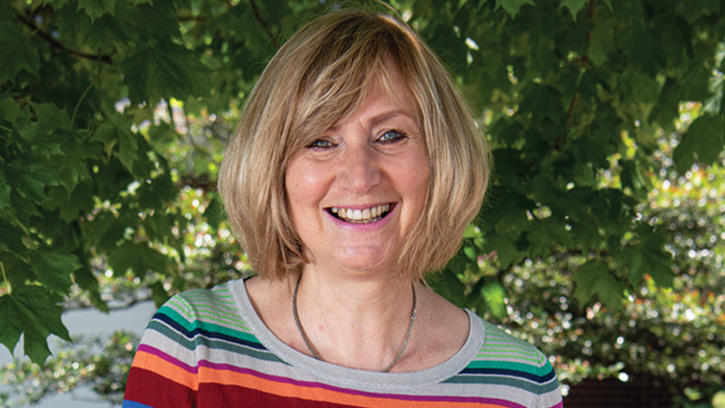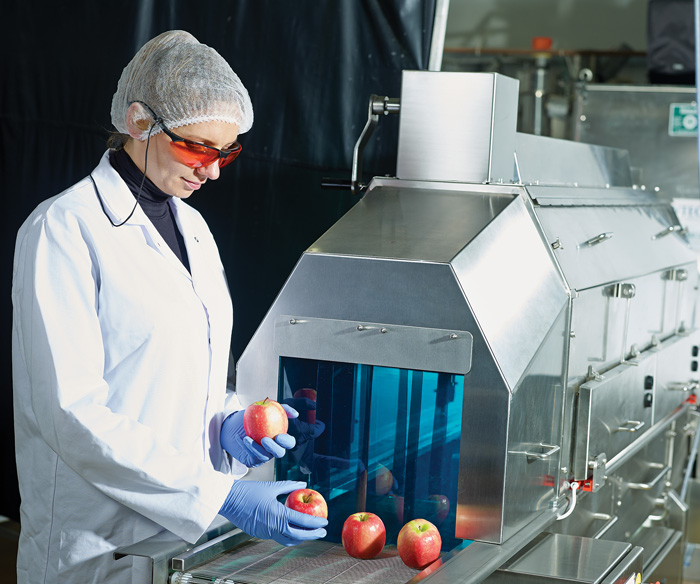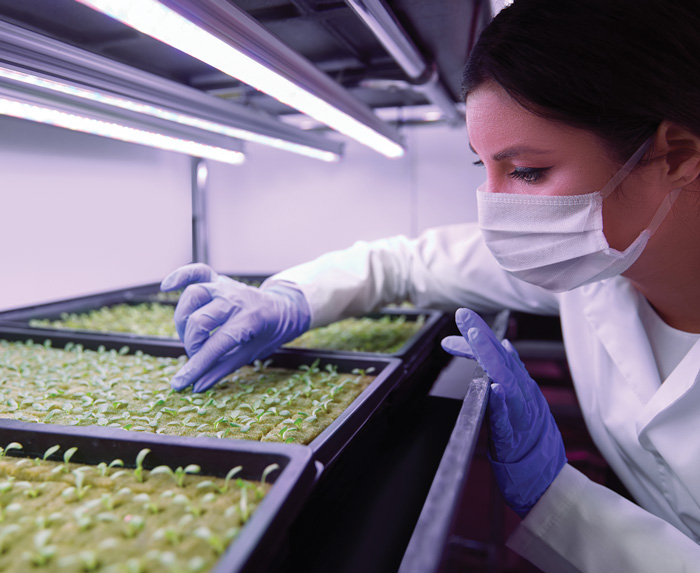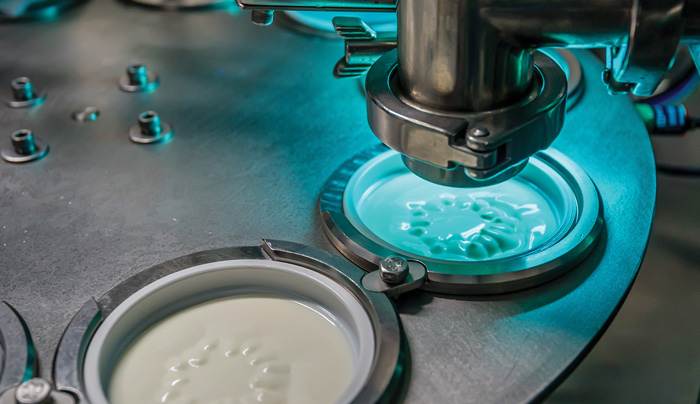The Light Fantastic
Profile | RESEARCH
If there are any silver linings to the global COVID-19 pandemic, the food industry can definitely include advances in food and food-contact surface disinfection technologies, says Tatiana Koutchma, novel processing research scientist at Agriculture and Agri-Food Canada’s Guelph Research and Development Center. Known for her extensive work in novel processing technologies and food safety engineering, Koutchma says that advances in germicidal light-based technologies ramped up as rapidly as the need to stem the transmission of the virus, no matter the vector.
“Ultraviolet light has been used for years in the food processing industry as part of multi-hurdle pathogen control and intervention systems,” notes Koutchma, a co-founder and chair of the UV Food Working Group of the International Ultraviolet Association (IUVA). “But certain UV-C wavelengths used to sanitize or disinfect food and food-contact surfaces posed harm to workers’ health and limited the technology’s use in food processing environments.
“COVID-19 pushed the scientific community to test, vet, and validate UV-C based methods to show they could be used safely in food processing and foodservice environments and with a high level of confidence in terms of decontamination, disinfection, and sanitization of foods and surfaces, including packaging,” she explains.
Food Technology talked with Koutchma to find out more about her lab’s research into “the light fantastic” and how UV and other light-based technologies have advanced and their potential for improving food safety in the future.
How has the ongoing COVID-19 pandemic spurred the development of light-based technologies?
When the pandemic started, there was a search for purely physical methods to reduce the cross-contamination of [foods by] COVID-19. Ultraviolet light (UV) was one of them because there were data regarding the efficacy of UV against SARS virus strains in literature. Some research demonstrated the efficacy of UV light to reduce transmittance [of virus] through the air. There were a lot of speculations concerning COVID transmission through foods, packaging, or other surfaces, so preliminary experiments centered on air and surfaces.
With the pandemic, companies started looking at different UV light sources and wavelengths like light-emitting diodes (UV LEDs) because of their numerous advantages. UV LED can emit more than one wavelength in UV-C range from 200 to 280 nm that can be more efficient. The LED devices are small compared to earlier technology. Designs of LED devices can vary, so that shorter wavelengths can be used. Peer-reviewed articles indicated that UV light with shorter wavelengths was safer for people but more effective against viruses and bacterial pathogens.
[Using shorter wavelengths] means that the air could be disinfected while people were still present in the room. I reviewed different designs and developments by Canadian companies who wanted to use [shorter wavelength] UV light for different disinfection applications. They even wanted to build an LED device into elevator buttons, so [the elevator] could be constantly disinfected!
What were the challenges of using UV-C and other light-based technologies in food processing prior to the pandemic?
Ultraviolet-C was developed for disinfection of air, water, and smooth contact surfaces. Foods are much more complex. For example, juice is not comparable with water because juices are not transparent. Juices contain particles that create a complex rheology and light scattering. We also care about not destroying the quality and nutrients in foods. Solid foods and produce have complex surface topographies. UV-C was not as effective for foods as it was for water and air.
So, we were looking for different solutions. One of the solutions was pulsed light because it has higher energy and a broader spectrum. Light-emitting diodes, or LEDs, gave us the opportunity to look at different wavelengths specific to each food pathogen. We found optimal wavelengths that would allow pathogenic reduction at lower energies. This was an opportunity for us to look at combinations of wavelengths [and] not just broad-spectrum UV light, and to select the most effective wavelengths for the product.
What problems do light-based technologies solve, in food production and processing?
A lot of problems, actually. First, [UV technology] can significantly improve safety through disinfection of air, nonfood, and food contact surfaces, and [food] products. UV light can extend the shelf life and improve the preservation [of foods]. For example, it can extend the shelf life of fresh produce, ingredient powders, and juices through the reduction of pathogenic and spoilage microbes.
This technology is nonthermal. Because it is nonthermal and nonchemical, it’s considered organic in the United States and in Canada. Unlike irradiation treatment, UV is nonionizing. Consumers are afraid of irradiation in food, but UV is much lower in energy than irradiation. Some functional properties of food, like antioxidants, can be improved by UV light treatment. Also, UV light can reduce contamination of foods and beverages by mycotoxins and improve their quality.
Can you describe the mechanisms of bacterial inactivation using UV-C?
Bacterial inactivation will differ a little bit depending on the wavelengths used. UV-C between 200 and 280 nm is germicidal. It leads to the inhibition of reproduction of the cells through DNA damage.
Another range is UV-B, [which is] between 280 nm, and I believe, 360 nm. This has different effects. UV-B light can damage the DNA of microorganisms and affects the proteins. The UV-A [wavelength] range affects DNA, proteins, and maybe membranes through ROS [reactive oxygen species] creation, and so on. The combination of these different UV wavelengths can lead to the most effective treatment.
Could you give us a few examples of the latest research in UV-C applications in the food industry?
I think there is great interest right now for fresh produce and fruits such as apples and lemons, and grains. I know that during COVID, there was an interest to clean and disinfect, not just food surfaces but even transportation trucks. Now there is disinfection of packaging and many other [food processing] surfaces like conveyor belts. UV can be used from field to kitchen and fork. This will be a reality soon.
The food industry uses UV commonly for disinfection of sugar syrups. There are applications in Canada for cold-pressed juices. They are using older technology, UV lamps. LED is an emerging concept with many advantages. The LED units are smaller in size than UV lamps and have a very flexible design. No mercury and glass.
New LED technology is looking at portable designs not only for water disinfection, but treatment of beverages and other liquids.
As a food scientist myself, I’m skeptical about using UV-C light on produce, such as romaine lettuce and spinach, both of which essentially have infinite surface areas. Does the UV LED penetrate better than the older UV-C lamp?
It depends on the wavelength. The shorter wavelengths will penetrate better, but at the same time, we can use [wavelength] combinations. There are different mechanisms of action, so we can improve the efficacy of one wavelength by combining it with different wavelengths. We won’t be producing the objective of the full 5-log reduction [of pathogens]. We were obtaining up to a 2- or 3-log reduction, for example, on apples, [and a] 1- to 2-log reduction on spinach. Yes, you are right. It’s hard to reach some organisms if they’re hidden. We can also combine UV light with oxidizers.
I think one of the interesting applications of UV is its use in [home] refrigerators to extend the shelf life of fresh produce, to remove odors and disinfect air.
I know of one home refrigerator made by Samsung (Bettywu 2020), I think. They have a special compartment with built-in UV-C for fresh produce. So, you see, the LED UV-C design can be very flexible. UV can be beneficial, not just for reduction of spoilage organisms and pathogens but also to remove unpleasant odors in the refrigerator.
You could use LED UV technology safely in a home environment?
That’s right. They can be used very safely in the refrigerators or other disinfection devices.
Is UV-C LED also safe in food production areas? I know with the old-fashioned UV-C lamps, it had to be used at a great distance or at a time when workers were not present to avoid exposure.
[Lack of worker safety is] mainly related to a wavelength of 253.7 nm. I already mentioned the 222 nm wavelength in LED technology and novel excimer lamps. This shorter wavelength penetrate[s] the skin, [but]doesn’t damage eyes and it doesn’t cause cancer. There are several publications that state that these wavelengths are considered safe for humans.
Is the food industry going to use this technology as part of a multi-hurdle approach?
That is my vision of the disinfection chain.
What would be the other remediations or technologies that would work well with the UV LED?
Low concentrations of hydrogen peroxide, ozone, or even chlorides can be used in combination with LED UV-C.
What foods do you see as obtaining the most benefit from UV-C LED?
I would look at fresh produce, number one, also grains, seeds, and powders. There are not a lot of choices for powders right now. This technology is beneficial for powders because it is dry and won’t change the [physical] properties of the powder. I already mentioned cold-pressed juices. We are working right now on research which shows that longer wavelengths, like around 275–280 nm are not absorbed by the acids and vitamins in the juice.
UV-C LED can be used with a wavelength of 254 nm that is close to the absorption peak of vitamin C, so a lot of light will be absorbed by this vitamin C. This absorption is not happening at longer wavelengths between 275 to 280 nm. This is an obvious benefit of LEDs. We can select the wavelength that will be most efficient for the specific product.
You mentioned seeds, and I’m assuming you mean edible seeds. Could it be used for sprout seeds?
I think so. Yes.
It wouldn’t affect seed germination?
It depends on the UV dose. We did some experiments on corn and wheat. Because of the high humidity, because of the rain, we get mold on the grains. [The molds] can produce mycotoxins like DON and significantly reduce the quality of the grain. So, we treated corn with UV light, both LED and older lamps. We applied high doses of UV to the seeds, and then we checked the germination rate. We didn’t see any difference in germination rate before and after treatment.
How about smaller seeds used for sprouts? Like mung bean or alfalfa?
We tried it for wheat, but we didn’t try it for other seeds yet. We have a benchtop unit which allows us to expose the whole seed, not just one side. We will continue this research and try to scale it up to UV conveyor units, because we found it can be highly effective for delaying and reducing the growth of the mold on grains and corn, and maybe seeds, also. Seeds is a category we haven’t tried yet. It’s a different problem.
Is there a climate change application for light-based technology?
I think this is what is happening, actually. Because of climate change, mold growth in grains is increasing. It is a direct effect of climate change.
Because it’s a nonthermal treatment, UV-C LED has different effects on food quality and shelf life. Could you tell us more about that?
Yes. I already mentioned vitamin C. We are looking at its effects on other quality parameters in fresh produce. We compared it to HPP, thermal treatments, and other light treatments. We examined pH, solids, color, texture, and nutrient content. We used quite high doses of UV, because the wavelength and dose will determine the level of quality degradation. We didn’t see a lot of degradation. I thought vitamin C would be a concern because it’s very close to 254 nm, but the application of different wavelengths would avoid this.
If you had to summarize the UV-C LED technology for a soundbite, what would you say?
UV-C LED is environmentally friendly, sustainable, effective, smaller in size with a flexible design; [it’s] a novel solution for the whole food chain from field to fork.
Vital Statistics
Credentials: PhD, Food Process Engineering, Moscow State University of Food Production
Career Highlights: Active participant in the IFT Nonthermal Processing Division (NPD); speaker, short course presenter, reviewer, scientific sessions and workshops organizer, panelist, member at large, past chair, and chair-elect of NPD; lead in the food engineering track of the Annual Meeting Scientific Program Advisory Panel
Fun Fact: She speaks Russian.
Website: profils-profiles.science.gc.ca/en/profile/dr-tatiana-koutchma
LinkedIn: linkedin.com/in/tatianakoutchma








